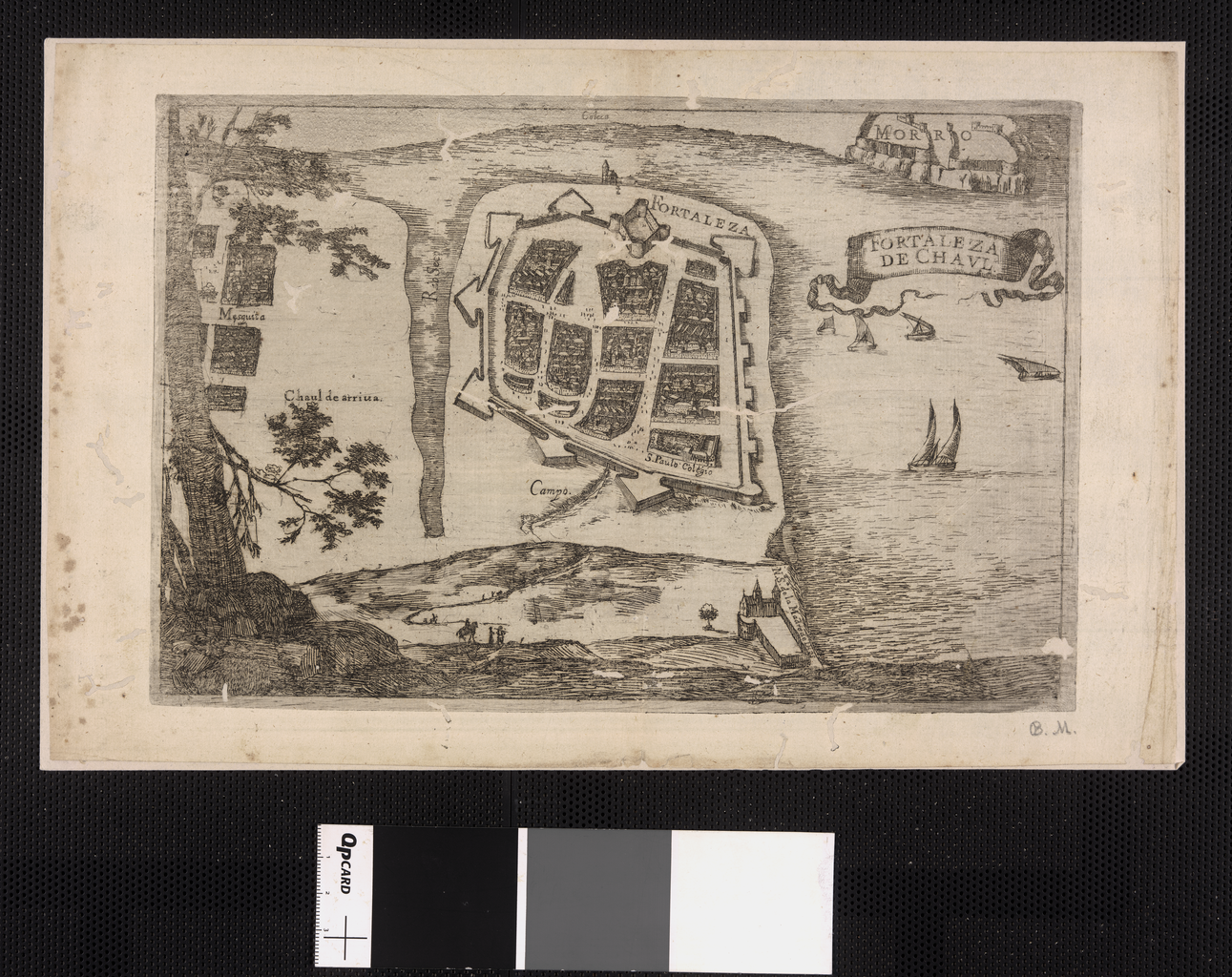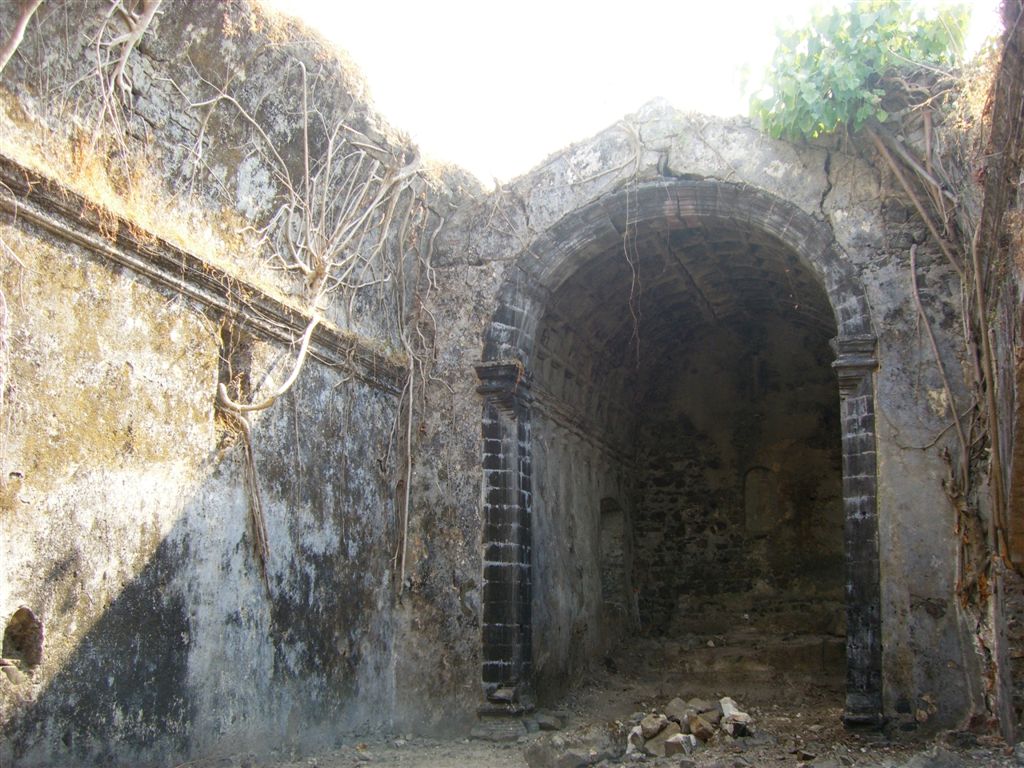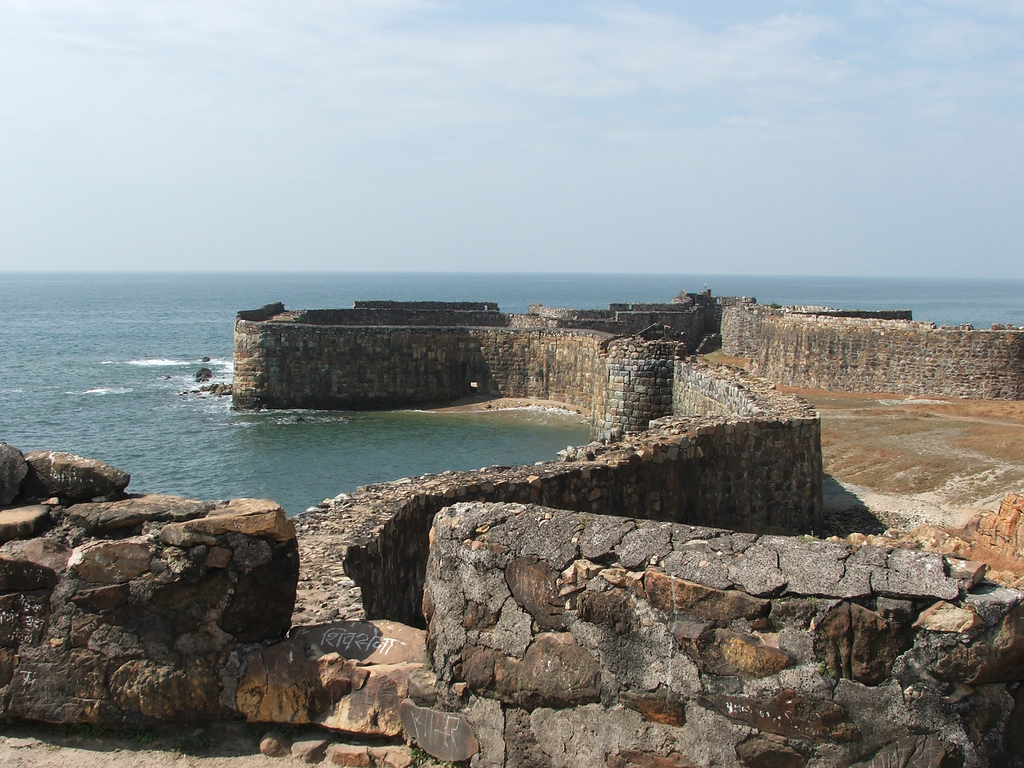|
Chaul
Chaul is a historic town located in the Raigad district of Maharashtra, India. The Korlai Fort is located nearby. History The town was famous for cotton manufactured goods in the 15th and 16th century, According to Varthema, Chaul was producing a lot of cotton stuffs. Even Portuguese explorer and writer Duarte Barbosa conceded fame of the Chaul for cotton materials. See also * Battle of Diu * Revdanda Revdanda is a village near Alibaug, Raigad District, Maharashtra. It's the site of the medieval 'Chaul harbor'. Directions India. It is connected through a coastal highway (Sagari Mahamarg) away from Alibag, away from Mumbai, 37km away fr ... References External links The Portuguese Fort of Chaul, India Chaul, a historical port {{Authority control Former Portuguese colonies Populated places established in 1521 Cities and towns in Raigad district 1521 establishments in the Portuguese Empire ... [...More Info...] [...Related Items...] OR: [Wikipedia] [Google] [Baidu] |
Battle Of Diu (1509)
The Battle of Diu was a naval battle fought on 3 February 1509 in the Arabian Sea, in the port of Diu, India, between the Portuguese Empire and a joint fleet of the Sultan of Gujarat, the Mamlûk Burji Sultanate of Egypt, and the Zamorin of Calicut with support of the Republic of Venice and the Ottoman Empire.Rogers, Clifford J. ''Readings on the Military Transformation of Early Modern Europe'', San Francisco:Westview Press, 1995, pp. 299–333 aAngelfire.com/ref> The Portuguese victory was critical: the great Muslim alliance was soundly defeated, easing the Portuguese strategy of controlling the Indian Ocean to route trade down the Cape of Good Hope, circumventing the historical spice trade controlled by the Arabs and the Venetians through the Red Sea and Persian Gulf. After the battle, the Kingdom of Portugal rapidly captured several key ports in the Indian Ocean including Goa, Ceylon, Malacca, Bom Baim and Ormuz. The territorial losses crippled the Mamluk Sultan ... [...More Info...] [...Related Items...] OR: [Wikipedia] [Google] [Baidu] |
Revdanda
Revdanda is a village near Alibaug, Raigad District, Maharashtra. It's the site of the medieval 'Chaul harbor'. Directions India. It is connected through a coastal highway (Sagari Mahamarg) away from Alibag, away from Mumbai, 37km away from Roha and 33km away from Murud. Until a few years ago the coastal road that goes south from Alibag used to terminate at Revdanda where it encountered the Kundalika creek. A bridge now spans the creek and the whole stretch southward of Revdanda up to Murud-Janjira has now become accessible. Part of the town is situated within the premises of Revdanda fort, an old Portuguese fort. History The history of Revdanda and the surrounding villages are quite similar to Chaul, due to their close proximity to the town. Muslim Rule In 1490 the area fell under the Ahmadnagar Sultanate. Portuguese Era In 1505, Portuguese commander Dom Lourenço de Almeida defeated the Muslims and conquered the area around Chaul. In 1508, Venetian mercenaries along ... [...More Info...] [...Related Items...] OR: [Wikipedia] [Google] [Baidu] |
Korlai Fort
Korlai Fort is a colonial fort in the Raigad district of Maharashtra, India. Formerly a part of the Chaul in Portuguese India, the structure is a specimen of Portuguese colonial architecture. It was built as a companion to the fort at Chaul, at this strategic position the Portuguese could use it to defend their province which stretched from Korlai to the Fort Bassein. Vestiges of the Portuguese occupation are manifested in the distinct dialect of the Korlai villages inhabitants which is a Luso-Indian creole called Korlai Portuguese Creole. History This fort was built in 1521 by the Portuguese with the permission of the Ahmednagar sultanate. In 1521, taking advantage of the confusion in the aftermath of the death of the Burhan Nizam the Portuguese tried to take over the fort. However the sultan retaliated and sent some of his best men to reclaim the fort. Subsequently, a truce was reached in which the Ahmednagar sultanate occupied the island and no further fortification of ... [...More Info...] [...Related Items...] OR: [Wikipedia] [Google] [Baidu] |
Kanhoji Angre
Kanhoji Angre (Marathi: कान्होजी आंग्रे, anʱod͡ʒiː aːŋɡɾe, also known as Conajee Angria or Sarkhel Angré (August 1669 – 4 July 1729) was a chief of the Maratha Navy in present-day India. Kanhoji became known for attacking and capturing European merchant ships and collecting ''jakat'' (known to locals as taxes), seen by Europeans traders and colonists as ransoming of their crews. British, Dutch and Portuguese ships often fell victims to these raids. Despite attempts by the Portuguese and British to put an end to his privateering activities, Angre continued to capture and collect ''jakat'' from European merchant ships until his death in 1729. Kanhoji's naval prowess in capturing dozens of European trading ships and avoiding capture has led to many historians to appraise Kanhoji as the most skilled Indian navy chief in the maritime history of India. Early life Angre was born on the fort Suvarnadurg, near Ratnagari in the year 1667 to mot ... [...More Info...] [...Related Items...] OR: [Wikipedia] [Google] [Baidu] |
Ludovico Di Varthema
Ludovico di Varthema, also known as Barthema and Vertomannus (c. 1470 – 1517), was an Italian traveller, diarist and aristocrat known for being one of the first non-Muslim Europeans to enter Mecca as a pilgrim. Nearly everything that is known about his life comes from his own account of his travels, ''Itinerario de Ludouico de Varthema Bolognese,'' published in Rome in 1510. Biography Middle East Varthema was born in Bologna. He was perhaps a soldier before beginning his distant journeys, which he undertook apparently from a passion for adventure, novelty and the fame which (then especially) attended successful exploration. Varthema left Europe near the end of 1502. Early in 1503, he reached Alexandria and ascended the Nile to Cairo. From Egypt, he sailed to Beirut and thence travelled to Tripoli, Aleppo and Damascus, where he managed to get himself enrolled, under the name of ''Yunus'' (Jonah), in the Mamluk garrison. Mecca From Damascus, Varthema made the journey to Me ... [...More Info...] [...Related Items...] OR: [Wikipedia] [Google] [Baidu] |
Populated Places Established In 1521
Population typically refers to the number of people in a single area, whether it be a city or town, region, country, continent, or the world. Governments typically quantify the size of the resident population within their jurisdiction using a census, a process of collecting, analysing, compiling, and publishing data regarding a population. Perspectives of various disciplines Social sciences In sociology and population geography, population refers to a group of human beings with some predefined criterion in common, such as location, race, ethnicity, nationality, or religion. Demography is a social science which entails the statistical study of populations. Ecology In ecology, a population is a group of organisms of the same species who inhabit the same particular geographical area and are capable of interbreeding. The area of a sexual population is the area where inter-breeding is possible between any pair within the area and more probable than cross-breeding with ... [...More Info...] [...Related Items...] OR: [Wikipedia] [Google] [Baidu] |
Former Portuguese Colonies
A former is an object, such as a template, gauge or cutting die, which is used to form something such as a boat's hull. Typically, a former gives shape to a structure that may have complex curvature. A former may become an integral part of the finished structure, as in an aircraft fuselage, or it may be removable, being using in the construction process and then discarded or re-used. Aircraft formers Formers are used in the construction of aircraft fuselage, of which a typical fuselage has a series from the nose to the empennage, typically perpendicular to the longitudinal axis of the aircraft. The primary purpose of formers is to establish the shape of the fuselage and reduce the column length of stringers to prevent instability. Formers are typically attached to longerons, which support the skin of the aircraft. The "former-and-longeron" technique (also called stations and stringers) was adopted from boat construction, and was typical of light aircraft built until th ... [...More Info...] [...Related Items...] OR: [Wikipedia] [Google] [Baidu] |
Duarte Barbosa
Duarte Barbosa (c. 14801 May 1521) was a Portuguese writer and officer from Portuguese India (between 1500 and 1516). He was a Christian pastor and scrivener in a '' feitoria'' in Kochi, and an interpreter of the local language, Malayalam. Barbosa wrote the ''Book of Duarte Barbosa'' ( pt, Livro de Duarte Barbosa) c. 1516, making it one of the earliest examples of Portuguese travel literature. In 1519, Barbosa embarked on the first expedition to circumnavigate the world, led by his brother-in-law Ferdinand Magellan. Barbosa was killed in 1521, at a banquet held by Rajah Humabon in the Philippines, a few days after the Battle of Mactan on Cebu Island. Early life Barbosa's father was Diogo Barbosa. Diogo was a servant of Álvaro of Braganza, and in 1501 he went to India in a joint venture with Álvaro, Bartholomeu Marchionni, and the 3rd Portuguese India Armada (captained by João da Nova). While Diogo was away, Barbosa remained in Kochi with his uncle, Gonçalo Gil Barbo ... [...More Info...] [...Related Items...] OR: [Wikipedia] [Google] [Baidu] |
Cotton
Cotton is a soft, fluffy staple fiber that grows in a boll, or protective case, around the seeds of the cotton plants of the genus '' Gossypium'' in the mallow family Malvaceae. The fiber is almost pure cellulose, and can contain minor percentages of waxes, fats, pectins, and water. Under natural conditions, the cotton bolls will increase the dispersal of the seeds. The plant is a shrub native to tropical and subtropical regions around the world, including the Americas, Africa, Egypt and India. The greatest diversity of wild cotton species is found in Mexico, followed by Australia and Africa. Cotton was independently domesticated in the Old and New Worlds. The fiber is most often spun into yarn or thread and used to make a soft, breathable, and durable textile. The use of cotton for fabric is known to date to prehistoric times; fragments of cotton fabric dated to the fifth millennium BC have been found in the Indus Valley civilization, as well as fabric remnants dat ... [...More Info...] [...Related Items...] OR: [Wikipedia] [Google] [Baidu] |
Maratha
The Marathi people ( Marathi: मराठी लोक) or Marathis are an Indo-Aryan ethnolinguistic group who are indigenous to Maharashtra in western India. They natively speak Marathi, an Indo-Aryan language. Maharashtra was formed as a Marathi-speaking state of India in 1960, as part of a nationwide linguistic reorganization of the Indian states. The term "Maratha" is generally used by historians to refer to all Marathi-speaking peoples, irrespective of their caste; however, now it may refer to a Maharashtrian caste known as the Maratha. The Marathi community came into political prominence in the 17th century, when the Maratha Empire was established under Chhatrapati Shivaji; the Marathas are credited to a large extent for ending Mughal rule over India. History Ancient to medieval period During the ancient period, around 230 BC, Maharashtra came under the rule of the Satavahana dynasty, which ruled the region for 400 years.India Today: An Encyclopedia of Life ... [...More Info...] [...Related Items...] OR: [Wikipedia] [Google] [Baidu] |
Fortress Of Chaul- Plans Of Plazas And Forts Of Portuguese Possessions In Asia And Africa WDL1057
A fortification is a military construction or building designed for the defense of territories in warfare, and is also used to establish rule in a region during peacetime. The term is derived from Latin ''fortis'' ("strong") and ''facere'' ("to make"). From very early history to modern times, defensive walls have often been necessary for cities to survive in an ever-changing world of invasion and conquest. Some settlements in the Indus Valley civilization were the first small cities to be fortified. In ancient Greece, large stone walls had been built in Mycenaean Greece, such as the ancient site of Mycenae (famous for the huge stone blocks of its 'cyclopean' walls). A Greek '' phrourion'' was a fortified collection of buildings used as a military garrison, and is the equivalent of the Roman castellum or English fortress. These constructions mainly served the purpose of a watch tower, to guard certain roads, passes, and borders. Though smaller than a real fortress, they acted ... [...More Info...] [...Related Items...] OR: [Wikipedia] [Google] [Baidu] |







